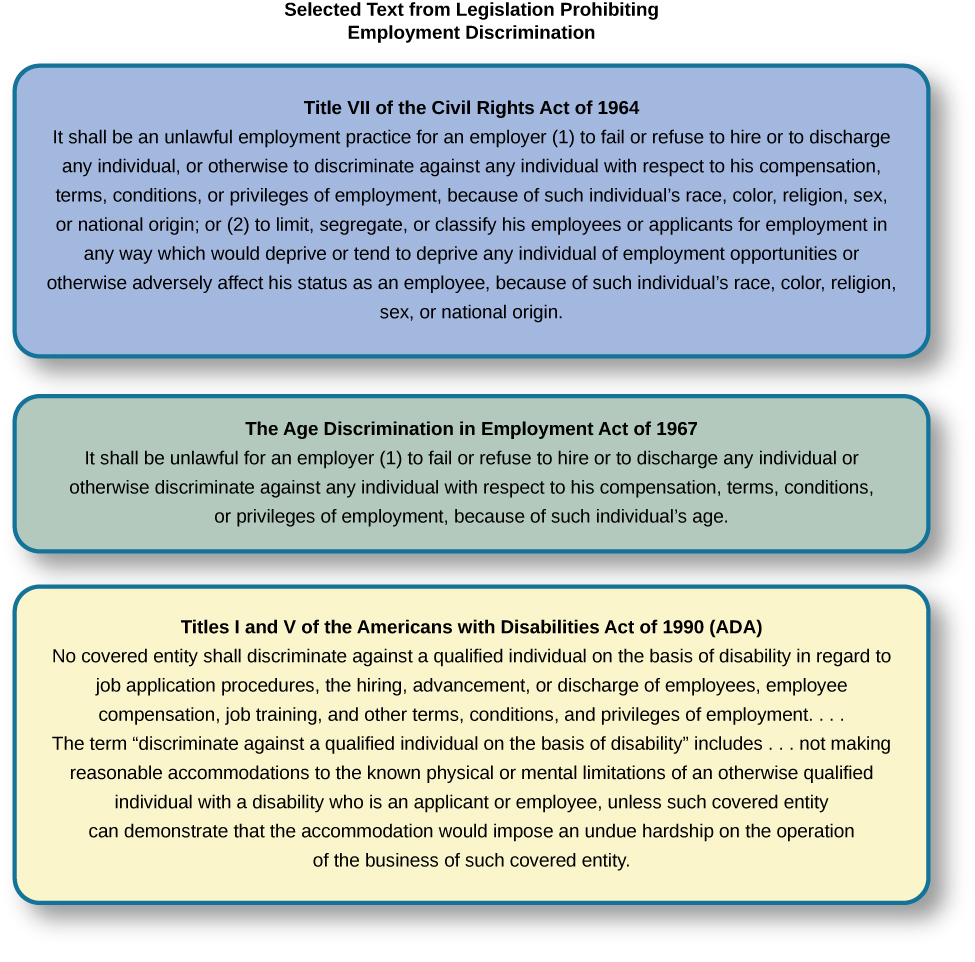| << Chapter < Page | Chapter >> Page > |
Some hiring criteria may be related to a particular group an applicant belongs to and not individual abilities. Unless membership in that group directly affects potential job performance, a decision based on group membership is discriminatory ( [link] ). To combat hiring discrimination , in the United States there are numerous city, state, and federal laws that prevent hiring based on various group-membership criteria. For example, did you know it is illegal for a potential employer to ask your age in an interview? Did you know that an employer cannot ask you whether you are married, a U.S. citizen, have disabilities, or what your race or religion is? They cannot even ask questions that might shed some light on these attributes, such as where you were born or who you live with. These are only a few of the restrictions that are in place to prevent discrimination in hiring. In the United States, federal anti-discrimination laws are administered by the U.S. Equal Employment Opportunity Commission (EEOC).

The U.S. Equal Employment Opportunity Commission (EEOC) is responsible for enforcing federal laws that make it illegal to discriminate against a job applicant or an employee because of the person's race, color, religion, sex (including pregnancy), national origin, age (40 or older), disability, or genetic information. [link] provides some of the legal language from laws that have been passed to prevent discrimination.

The United States has several specific laws regarding fairness and avoidance of discrimination. The Equal Pay Act requires that equal pay for men and women in the same workplace who are performing equal work. Despite the law, persistent inequities in earnings between men and women exist. Corbett&Hill (2012) studied one facet of the gender gap by looking at earnings in the first year after college in the United States. Just comparing the earnings of women to men, women earn about 82 cents for every dollar a man earns in their first year out of college. However, some of this difference can be explained by education, career, and life choices, such as choosing majors with lower earning potential or specific jobs within a field that have less responsibility. When these factors were corrected the study found an unexplained seven-cents-on-the-dollar gap in the first year after college that can be attributed to gender discrimination in pay. This approach to analysis of the gender pay gap, called the human capital model, has been criticized. Lips (2013) argues that the education, career, and life choices can, in fact, be constrained by necessities imposed by gender discrimination. This suggests that removing these factors entirely from the gender gap equation leads to an estimate of the size of the pay gap that is too small.

Notification Switch
Would you like to follow the 'Psychology' conversation and receive update notifications?